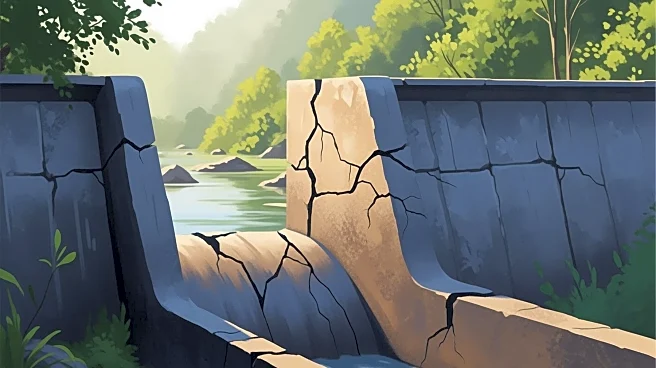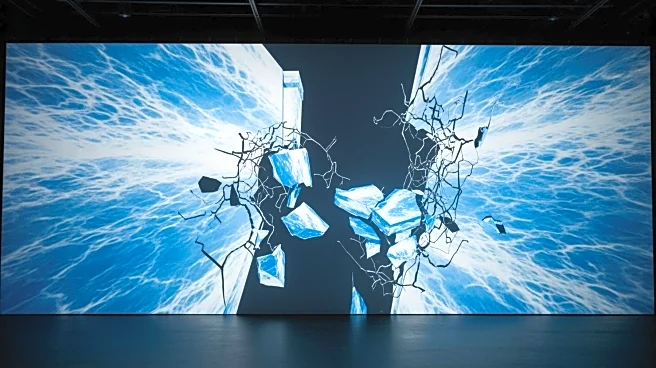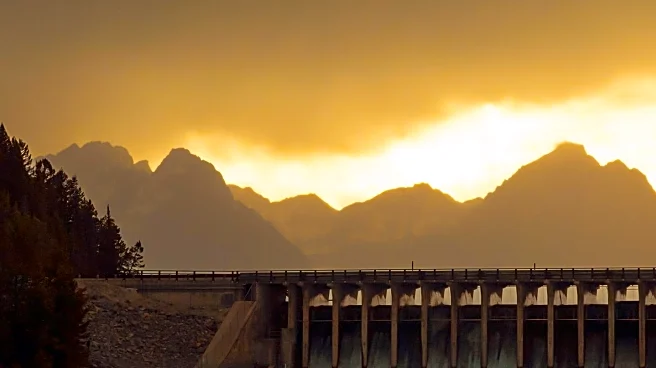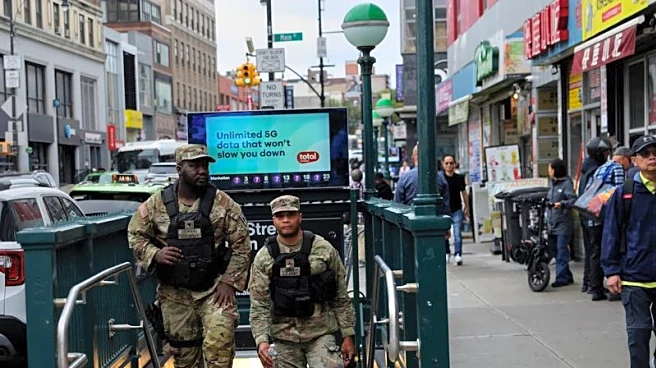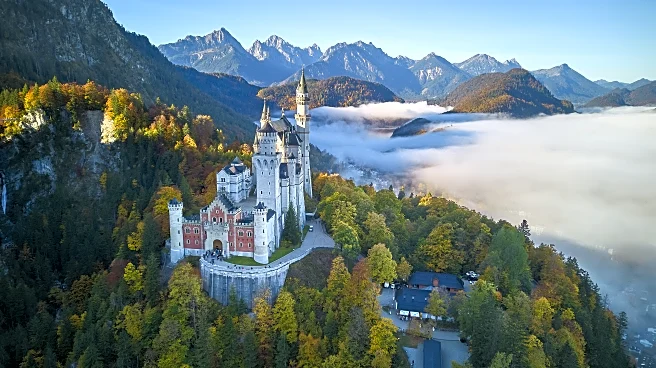What's Happening?
Lucy Raven's video installation, Murderers Bar, is being showcased at The Curve in London's Barbican. The installation chronicles the destruction of four dams on the Klamath River in Oregon and California,
a significant event driven by activism from Indigenous communities such as the Yurok, Karuk, Klamath, Hoopa, and Shasta Indian Nation. The Copco No. 1 dam, built in 1918, had severely impacted local ecosystems, particularly the salmon population, which held cultural and nutritional importance for these tribes. Raven's work, while not documentary in nature, is deeply rooted in research and collaboration with these communities. The installation uses various techniques, including aerial photography and animations, to depict the dam's destruction and the subsequent release of water, symbolizing a transformation of the landscape.
Why It's Important?
The destruction of the dams on the Klamath River represents a landmark victory for Indigenous communities who have long fought against environmental injustices. The removal of these dams is expected to restore the river's ecosystem, benefiting the salmon population and, by extension, the cultural and nutritional practices of the tribes. Raven's installation brings attention to the broader implications of such environmental actions, highlighting the intersection of art, activism, and ecological restoration. This event underscores the importance of Indigenous voices in environmental policy and the potential for art to amplify these narratives.
What's Next?
The exhibition at the Barbican may inspire further discussions on the role of art in environmental activism and the importance of preserving Indigenous cultures. As the river's ecosystem begins to recover, there may be increased interest in monitoring the ecological changes and the benefits to local communities. Additionally, Raven's work could lead to more collaborations between artists and Indigenous groups, fostering a deeper understanding of environmental issues and cultural preservation.
Beyond the Headlines
Raven's installation not only highlights the physical destruction of the dams but also explores the concept of 'states of change' through kinetic sculptures and visual storytelling. This approach invites viewers to consider the broader implications of environmental transformations and the pressures exerted by human interventions. The exhibition challenges traditional narratives by focusing on the river as a protagonist, emphasizing the dynamic relationship between nature and human activity.
